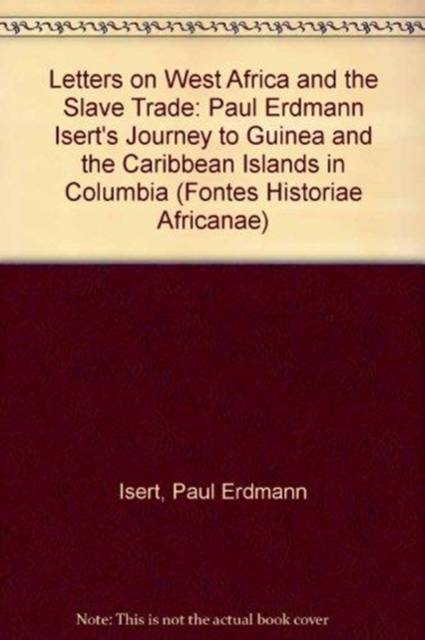
- Afhalen na 1 uur in een winkel met voorraad
- Gratis thuislevering in België vanaf € 30
- Ruim aanbod met 7 miljoen producten
- Afhalen na 1 uur in een winkel met voorraad
- Gratis thuislevering in België vanaf € 30
- Ruim aanbod met 7 miljoen producten
Zoeken
Letters on West Africa and the Slave Trade
Paul Erdmann Isert's Journey to Guinea and the Caribbean Islands in Columbia (1788)
Paul Erdmann Isert
€ 58,95
+ 117 punten
Omschrijving
Isert's book, in the form of twelve letters evidently written for publication, has excited interest ever since it first appeared in 1788. Though Isert's text was long ago translated into other languages, this is its first translation from the original German into English. Already a respected botanist and medical doctor, Isert became interested in ethnography on his arrival in Accra. Isert also has a special place in West African history because of his attempt to establish a plantation on the Gold Coast to counteract the trans-Atlantic slave trade. Throughout his text Isert draws a clear and lively picture of life on the Gold and Slave Coasts of Africa and the Danish and French islands in the West Indies at the end of the eighteenth century.
Specificaties
Betrokkenen
- Auteur(s):
- Vertaler(s):
- Uitgeverij:
Inhoud
- Aantal bladzijden:
- 288
- Taal:
- Engels
- Reeks:
Eigenschappen
- Productcode (EAN):
- 9780197261057
- Verschijningsdatum:
- 2/04/1992
- Uitvoering:
- Hardcover
- Formaat:
- Genaaid
- Afmetingen:
- 162 mm x 241 mm
- Gewicht:
- 689 g

Alleen bij Standaard Boekhandel
+ 117 punten op je klantenkaart van Standaard Boekhandel
Beoordelingen
We publiceren alleen reviews die voldoen aan de voorwaarden voor reviews. Bekijk onze voorwaarden voor reviews.











